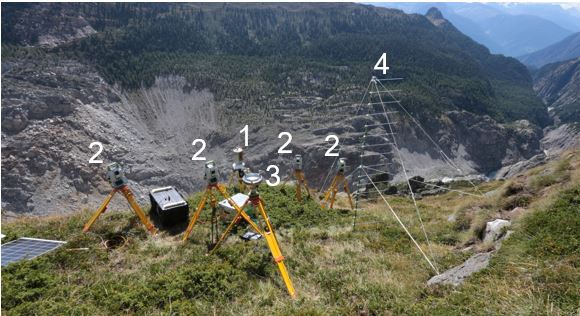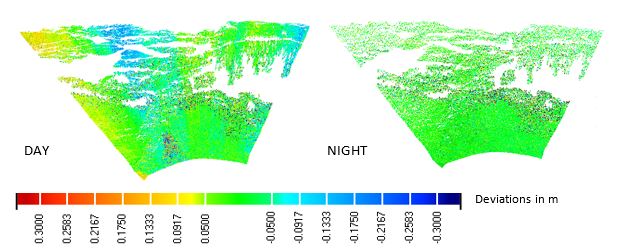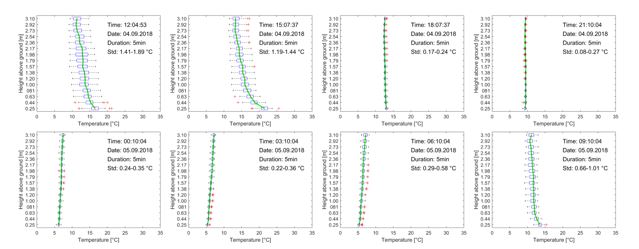Influence of atmospheric refraction on terrestrial long-range laser scanning
When laser scanning is used for monitoring, instrument sites in distances of up to a few kilometers from the area of interest are typical. Point clouds obtained from scanning over such distances are affected by time-varying artifacts that are typically not visible or relevant in close range scans. These are in particular deviations caused by slight instabilities in the scanner setup and by atmospheric refraction. While the former can be mitigated by a stable scanner setup, the latter is unavoidable and can cause apparent surface displacements up to a few decimeters. In September 2018, an experiment at the Moosfluh landslide was carried out to investigate these effects and to analyze the relation between apparent surface changes and atmospheric variations. Finally, it should also allow drawing conclusions about how to mitigate these effects.
The landslide area was scanned hourly over a period of 48 hours using a Riegl VZ-4000 long-range scanner and the meteorological conditions where continuously recorded with a weather station and 16 thermocouples measuring the temperature gradient for the first 3 m above ground. Additionally, the vertical angles from four total stations to four prisms were measured continuously to investigate the temporal variability of the influence of the refraction on the vertical beam deflection. The experiment setup is shown in figure 1.

The first results of the Moosfluh experiment support the assumption that the observed artifacts are caused by atmospheric refraction. While the mentioned artifacts (visible as stripe pattern) are present in the comparison of the point clouds acquired during the day (figure 2 left), almost none are existing in the comparison of two night scans (figure 2 right). A further analysis of the inclination of the scanner setup could also exclude instabilities of the setup as cause of these artifacts.

Additionally, the plots of the measurements of the thermocouples (figure 3) show that there is a highly dynamic variation of the temperature gradient and the temperature itself close to the ground during the day and only a minor variation during the night, hence the influence on the measurement is stronger during the day. The current work focuses on the determination of the periodicity of these temperature variations and on the investigation of the correlation between the variations of the measured temperature gradients and the observed artifacts in the point cloud comparisons.

Contact
- Location location_onHIL D 47.2
- Phone phone+41 44 633 05 55
- Emailemailandreas.wieser@geod.baug.ethz.ch
Geosensorik und Ingenieurgeodäsie
Stefano-Franscini-Platz 5
8093
Zürich
Switzerland